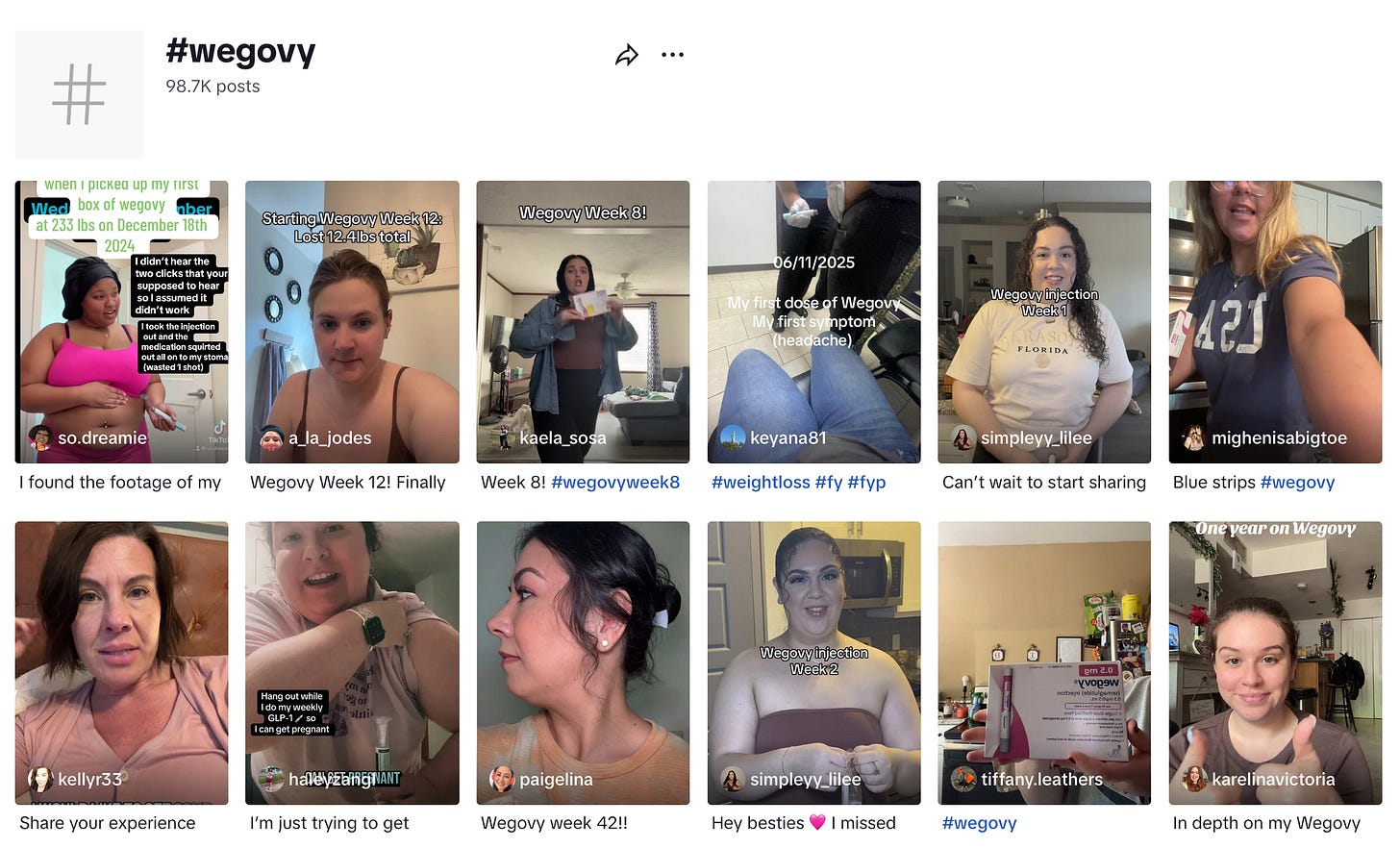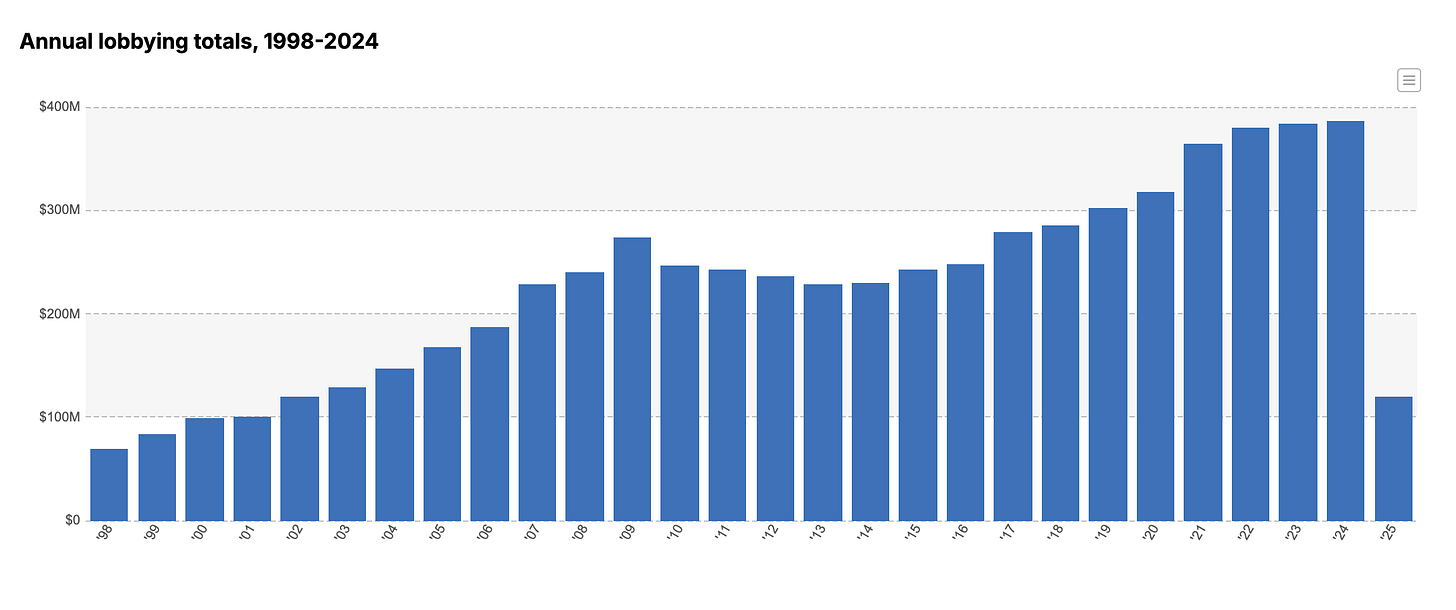Ask your doctor if banning ads is right for you
Senators are trying to kick Pharma off the public stage. But history says they won’t leave quietly. Here are six thoughts on what may come next.
Last Thursday, Senators Bernie Sanders and Angus King announced a bill that would outlaw direct-to-consumer pharmaceutical advertising in the United States across all media platforms, including social media.
“The American people don’t want to see misleading and deceptive prescription drug ads on television,” Sanders said in a statement reported by the Wall Street Journal. “They want us to take on the greed of the pharmaceutical industry and ban these bogus ads.”
The proposed legislation mirrors a pledge made on the campaign trail by now–Health and Human Services Secretary Robert F. Kennedy Jr, who has long framed these ads as a public health threat and a corrupting force in American media. “Everybody agrees it’s a bad idea,” he said in a 2024 campaign video on X, pointing out that only one other country — New Zealand — allows such advertising.
If the legislation goes through, the impact will be huge. The ten largest pharmaceutical companies in the US spent nearly $14 billion on direct-to-consumer efforts in 2023 alone, according to a recent analysis from the Campaign for Sustainable Rx Pricing. But, if history is any guide, banning the ads won’t silence Big Pharma completely. It will just shift their strategy — dramatically and decisively.
We’ve seen this playbook before, when Big Tobacco innovated new ways to market their products after the US banned cigarette advertising from television and radio in the 1970s. Tobacco companies got smarter, pumping money into print media, billboards, retail displays, event sponsorships, and subliminal product placements.
Today’s pharmaceutical giants are poised to follow a similar script, but now with an amazing array of new technologies and content platforms at their disposal. Here are some ways Big Pharma may adapt:
Pharma influencers will further invade social media
Companies spent more than $1 billion on ads for weight loss and diabetes medicines in 2023. The rise of drugs like Ozempic and Wegovy isn’t just happening on TV, but also on TikTok and Instagram where paid influencers show off weight loss results and hashtags do the work of ad copy.
In 2022, a researcher at the University of Colorado interviewed dozens of so-called ‘patient influencers’ with close links to drugmakers. The vast majority (69%) said they collaborated with a pharmaceutical company by either serving on advisory boards, speaking to physicians and researchers, or communicating about the drugs with their audiences.
If this new ban goes through, sponsored content will likely only accelerate. Pharma doesn’t even need influencers to mention the name of a drug. It just needs them to talk about the condition it treats — depression, joint pain, diabetes, ADHD — and let curiosity (and Google) do the rest.
Sponsorships will become a Trojan Horse
Expect subtly sponsored podcasts, social media partnerships, and wellness blogs that promote “condition awareness” while gently nudging patients in the direction of talking to their healthcare provider about prescription medicines. These campaigns will blend in so smoothly with everyday content that most consumers won’t realize they’re watching an ad.
The ban also won’t stop companies from investing in marketing like Pfizer’s pre-COVID “Get Old” campaign, which worked to keep the brand’s name positively in the public conversation without triggering any regulatory scrutiny.
“We want people to think of Pfizer in a different way,” Brenna Robinson, Pfizer’s Director of Global Reputation, Digital, Content & Media Strategy was quoted as saying in 2015. “If people view us differently and interact with us differently then that will maintain and hopefully improve the reputation of Pfizer as a company.”
Post-ban, we can expect to see more of this. Pharma will fund ‘fun runs’ and bankroll patient advocacy groups who then push policies or messaging that quietly benefit drug companies.
Even apps and fitness platforms may become vehicles for sponsorship. In 2021, Bayer partnered with One Drop, a company that sells glucose monitors and diabetes management apps, to push “personalized digital health programs” without overtly advertising a product. You can also expect that the mining of user data will ramp up, targeting specific ads to digital users based on their search history, purchase habits, and health conditions.
Big Pharma will move to own pharmacy shelf space
When TV ads vanished, Big Tobacco turned retail into a battlefield. By 2019, tobacco companies were spending 96% of their $8.2 billion US marketing budget at the point of sale — offering price discounts to retailers and wholesalers to reduce the price of cigarettes and providing promotional allowances such as payments for stocking, shelving, displaying, and merchandising particular brands.
If Pharma follows suit, we will likely see branded displays, branded wellness kiosks, and branded loyalty cards tied to specific treatments. Health-tracking apps may get bundled with prescriptions, and prescription bags will start carrying ads. Companies may also push in-store “disease management kits” or apps tied to their brands.
Pharma will work to rebrand itself as a public health hero
Philip Morris International (PMI) just had one of its best years ever — with growth across all categories. At the same time, the mega-corporation is working to rebrand itself as a health-conscious innovator.
“In these fast-changing times, you can always choose to do nothing,” the copy on its website reads. “Instead, we’ve set a new course for the company — we have chosen to do something really big.”
PMI is aiming for more than two-thirds of the company’s total net revenues to come from smoke-free products by 2030.
Similarly, wait for Big Pharma to present itself as a public health ally, funding research, sponsoring initiatives, or pushing the narrative of "ethical innovation." While they’ll say the goal is a healthier future, the real aim will be to remain indispensable in the public eye.
Our prediction: keep an eye on the “vaccine safety” space and follow the money.
The industry will fight the ban in court and in Congress
Rest assured, Big Pharma is gearing up for a legal battle. Since 1998, the industry has spent over $6 billion on lobbying, according to Open Secrets. A DTC ad ban would threaten not just the marketing pipeline, but the entire structure of their consumer influence.
Pharmaceutical companies will argue that commercial speech is protected speech and even if the courtroom battle fails, they will likely lobby to water down the bill, pushing for partial bans, self-regulation, or exemptions for “disease awareness” messaging.
We’ll see more ‘brand integration’ and ‘storytelling’ in entertainment
‘Brand integration’ is what used to be called ‘product placement’ and it’s a growing opportunity for Big Pharma as the age of direct advertising wanes. We’ll likely see brand-name prescription drugs pop up more often in scripted entertainment, which will drive audience curiosity. This has been happening for years, as seen by a spike in online searches for a flu drug, amantadine, after it was mentioned on a 2008 episode of House. Given viewers are more accepting of product placements today and even retain health knowledge from story-driven content, the opportunity is clear: a chance to shape public perception while staying ahead of regulatory scrutiny.






TV ads have been with us since they invented TV. I always found them irritating and insulting like most people probably, but it was tolerated to get to the entertainment. You could always mute them, ignore them, laugh at them, but it seemed pretty benign.
It crept up on us though, more ads, using subliminal messages and subtle psychological manipulation. Then they really went at it with sophisticated marketing, programming and other techniques to sway our outlook, and opinions. Somehow it was acceptable to confuse and manipulate people using deception and trickery for profit.
Everyone just sucked it up, thinking it was ok as long as they paid for the shows, but it was getting more and more insidious and devious with social media on the scene and smartphones everywhere.
They created a perfect storm of insidious manipulation that was now so all pervasive and accepted because people got addicted to their devices, at younger and younger ages, not aware they were being targeted and controlled.
So banning drug and pharma ads would be nice but it won't change our collective acceptance and willingness to allow deception and trickery in all it forms for profit.
Nicotine provides Neuroprotection of Brain Neurons and protects the brain against neurodegeneration. Nicotine can enhance focus and cognitive function in some contexts, potentially improving critical thinking. Of course, not much funding has been provided to the few studies that delve into this topic. But ask yourself, if the above is true, can you be surprised there has been a 60 year propaganda campaign against Tobacco?